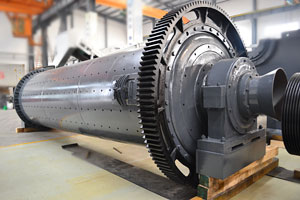WHAT IS SLAG CEMENT?

Ball mill
Slag cement, or ground granulated blast-furnace slag (GGBFS), has been used in concrete projects in the United States for over a century. Earlier usage of slag cement in Europe and elsewhere demonstrates that long-term performance is enhanced in many ways. Based on these early experiences, modern designers have found that these improved durability characteristics help further reduce life-cycle costs and lower maintenance costs.
Using slag cement to replace a portion of Portland cement in a concrete mixture is a useful method to make concrete better and more consistent. Among the measurable improvements are:
- Better concrete workability
- Easier finish ability
- Higher compressive and flexural strengths
- Lower permeability
- Improved resistance to aggressive chemicals
- More consistent plastic and hardened properties
- Lighter color
When iron is manufactured using a blast furnace, the furnace is continuously charged from the top with oxides, fluxing material, and fuel. Two products—slag and iron—collect in the bottom of the hearth. Molten slag floats on top of the molten iron; both are tapped separately.
The molten iron is sent to the steel producing facility, while the molten slag is diverted to a granulator. This process, known as granulation, is the rapid quenching with water of the molten slag into a raw material called granules. Rapid cooling prohibits the formation of crystals and forms glassy, non-metallic, silicates and aluminosilicates of calcium.
These granules are dried and then ground to a suitable fineness, the result of which is slag cement. The granules can also be incorporated as an ingredient in the manufacture of blended Portland cement.
RELEVANT TERMINOLOGY
Ground granulated blast-furnace slag (GGBFS): hydraulic cement formed when granulated blast-furnace slag is ground to a suitable fineness. Commonly referred to as slag cement, or GGBFS. Hydraulic cement: cement that sets and hardens by chemical interaction with water and is capable of doing so under water.
Blast-furnace slag: The non-metallic product, consisting essentially of silicates and aluminosilicates of calcium and other bases that is developed in a molten condition simultaneously with iron in a blast furnace.
Granulated blast-furnace slag: The glassy, granular material formed when molten blast-furnace slag is rapidly chilled by immersion in water. Also referred to as granules.
Portland cement: hydraulic cement produced by pulverizing Portland cement clinker, usually containing calcium sulfate.
Blended cement: hydraulic cement produced by intergrading Portland cement clinker with other materials, or by blending Portland cement with other materials, or by a combination of intergrading and blending.
Portland blast-furnace slag cement: blended cement consisting of an intimately underground mixture of Portland cement clinker and granulated blast-furnace slag, or an intimate and uniform blend of Portland cement and fine granulated blast-furnace slag in which the amount of the slag constituent is within specified limits.
Air-cooled blast-furnace slag: The material resulting from the solidification of molten blast-furnace slag under atmospheric conditions. Subsequent cooling may be accelerated by application of water to the solidified surface. (This material can be mined and crushed for use as aggregates in concrete or fill material; it is not cementitious).
Expanded blast-furnace slag: The light-weight cellular material obtained by controlled processing of molten blast furnace slag with water, or water and other agents, such as steam or compressed air, or both. (This is commonly used as lightweight aggregate; it is not cementitious).

